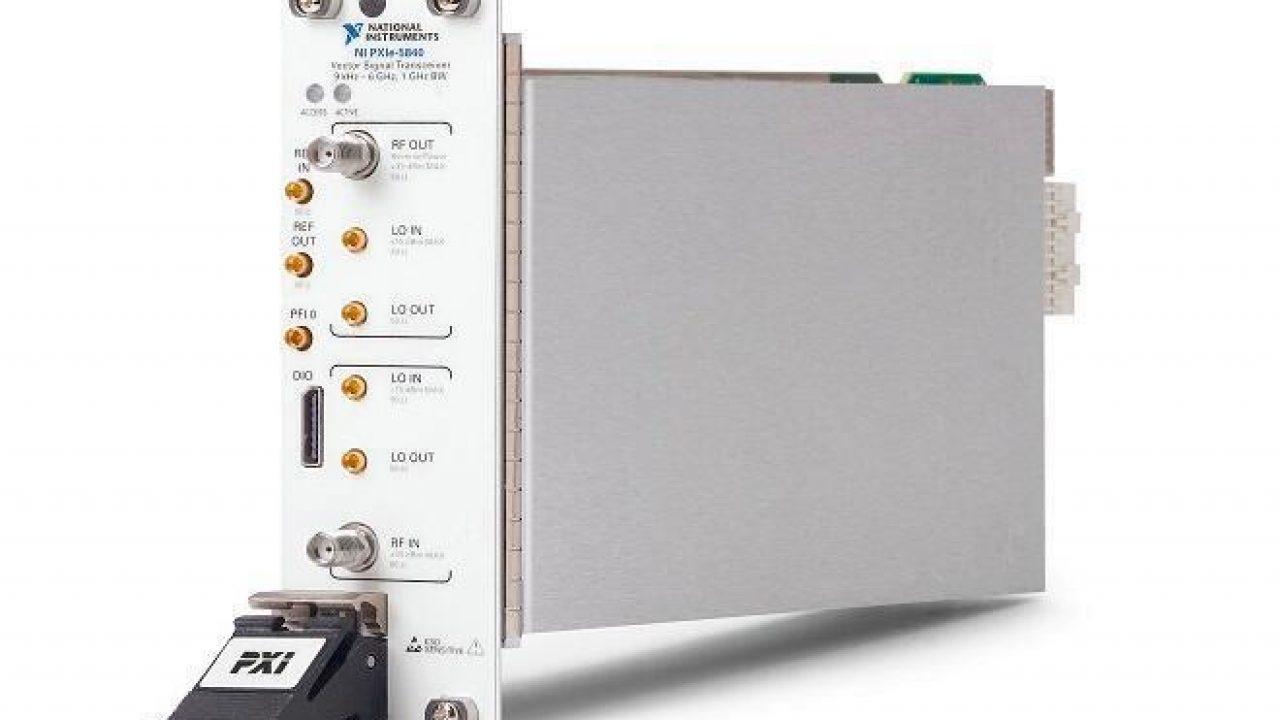NI boasts low-latency software design in next-gen VST
Article By : None

The PXIe-5840 module is the first 1 GHz bandwidth VST, aiming to set a new standard for density, performance and customisation.
National Instruments offer a combination of the industry's widest bandwidth and low latency software-design instrument in its next-generation VST – vector signal transceiver. Aimed at the “most demanding RF design and test applications,” its updated VST has 5X the bandwidth, a 33% smaller footprint and larger user-programmable FPGA.
The FPGA programmable instrument combines a 6.5 GHz RF vector signal generator, 6.5 GHz vector signal analyser, high-performance user-programmable FPGA and high-speed serial and parallel digital interfaces into a single 2-slot PXI Express module. With 1 GHz of bandwidth, the latest VST is suited for a wide range of applications including 802.11ac/ax device testing, mobile/Internet of Things device testing, 5G design and testing, RFIC testing, radar prototyping and more.
Watch how fast an engineer can design a full AC to PoL power system
The PXIe-5840 provides 1 GHz of bandwidth for advanced digital pre-distortion (DPD) test and wideband signals such as radar, LTE-Advanced Pro and 5G. Its excellent measurement accuracy enables the second-generation VST to measure 802.11ax Error Vector Magnitude (EVM) performance of -50 dB. Further, the instrument boats measurement speeds up to 10X faster than traditional instrumentation using FPGA-based measurement acceleration and highly optimised measurement software.
The small size and tight synchronisation of the VST enables up to 8×8 multiple input, multiple output (MIMO) configuration in a single 18-slot chassis, while a user-programmable FPGA allows engineers to easily design with LabVIEW.
The VST is a vital part of the NI platform and ecosystem that engineers can use to build smarter test systems. These test systems benefit from more than 600 PXI products ranging from DC to mmWave. They feature high-throughput data movement using PCI Express Gen 3 bus interfaces and sub-nanosecond synchronisation with integrated timing and triggering. Users can take advantage of the productivity of the LabVIEW and NI TestStand software environments, along with a vibrant ecosystem of partners, add-on IP and applications engineers, to help dramatically lower the cost of test, reduce time to market and future-proof testers for tomorrow’s challenging requirements.
Subscribe to Newsletter
Test Qr code text s ss


